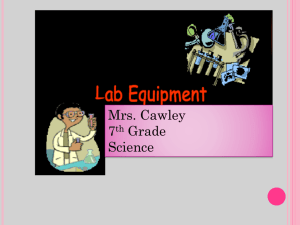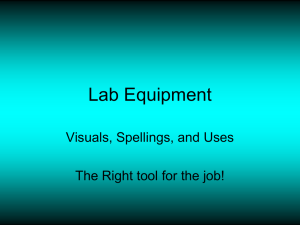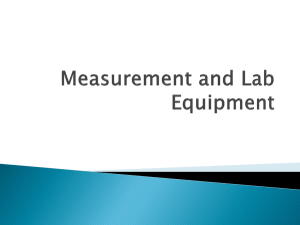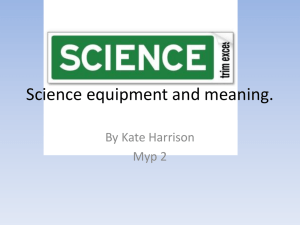Lab Equipment
advertisement
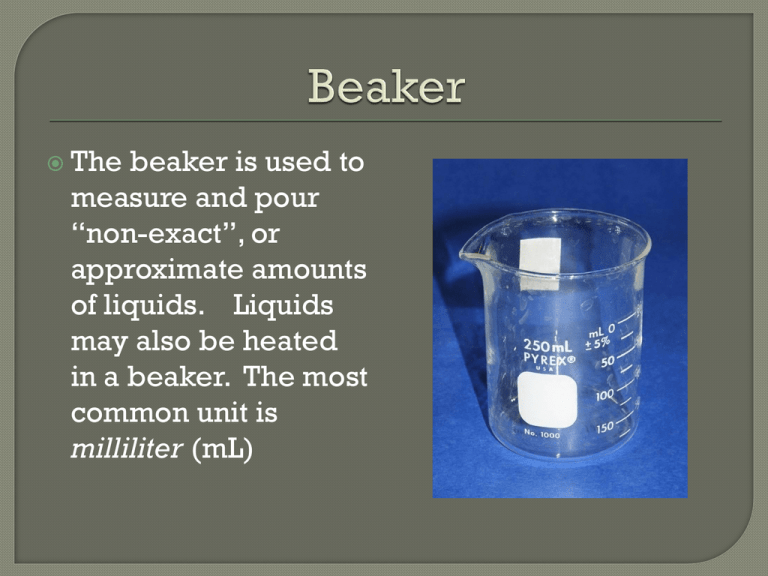
The beaker is used to measure and pour “non-exact”, or approximate amounts of liquids. Liquids may also be heated in a beaker. The most common unit is milliliter (mL) This container has the same general uses as the beaker. It’s units are also milliliters (mL). The funnel is used to transfer liquids from a large-mouthed container to one with a much smaller opening. There are usually no units associated with the transfer of these liquids. The dropper is used to transfer small amounts of liquid from one container to another; usually one or two drops at a time. No units are used in the transfer of liquids by this method. The Petri dish is normally filled with a waxy substance called agar. It is used to grow cell cultures by putting it in an incubator to stimulate growth of organisms. An electrical device that is used to heat substances without the danger associated with heating substances with open flames. A piece of equipment used for heating substances with open flame operation. It is fueled with natural gas, supplied through “jets” located at each lab table. This is used to hold or attach other pieces of equipment to. It is usually used to heat substances in a beaker over a Bunsen burner flame. Tripod Ring Stand An attachment for the ring stand. Used in conjunction with a vertical pole and wire gauze (screen). Used in conjunction with the ring stand. It is put on top of the ring, and a beaker or flask is placed on top of it to protect the glassware from the flames. Tongs used to pick up hot objects or objects that may be contaminated with hazardous substances. Glassware that is used to observe, pour, or heat substances in. There are no measurement markings on test tubes. A container used to store, set up, or air dry test tubes. Used to hold test tubes when heating substances over an open flame. Device used to hold equipment or other structures in place on a ring stand. Used to clean the inside of test tubes or other glassware. Used for protecting your eyes in lab. Should be worn especially during labs with chemicals, fire, or glassware involved. An instrument used to view objects that cannot be seen with the unaided eye. A thin rectangular piece of glass or plastic that is used to make “mounts” of specimens to view using a compound mircoscope. A small square piece of glass or plastic that is “slipped over” a drop or specimen on a slide, and keeps them from moving on the microscope slide. An instrument used to pick up very small objects, or substances that could be harmful to human skin. An instrument used to move or manipulate tissue or organs when dissecting organisms. An instrument used in dissection of organisms. It is used very much like you would use a knife. Used to pick up or handle beakers when they have been heated. Used to measure distances. The units used are: meters (m), centimeters (cm), and millimeters (mm). An instrument used to measure and pour exact amounts of liquid. The general unit used is milliliter (mL). An instrument used to measure the weight of objects by hanging them on a hook at one end of the scale. The unit used is Newtons (N) An instrument used to measure the mass of object by moving three different weights on three beams. The unit most associated with mass is the gram (g). An instrument used to measure the temperature of objects, materials, or substances. The units are degrees Celcius , or degrees Fahrenheit. Instrument used to measure time intervals. Most common unit is seconds.
